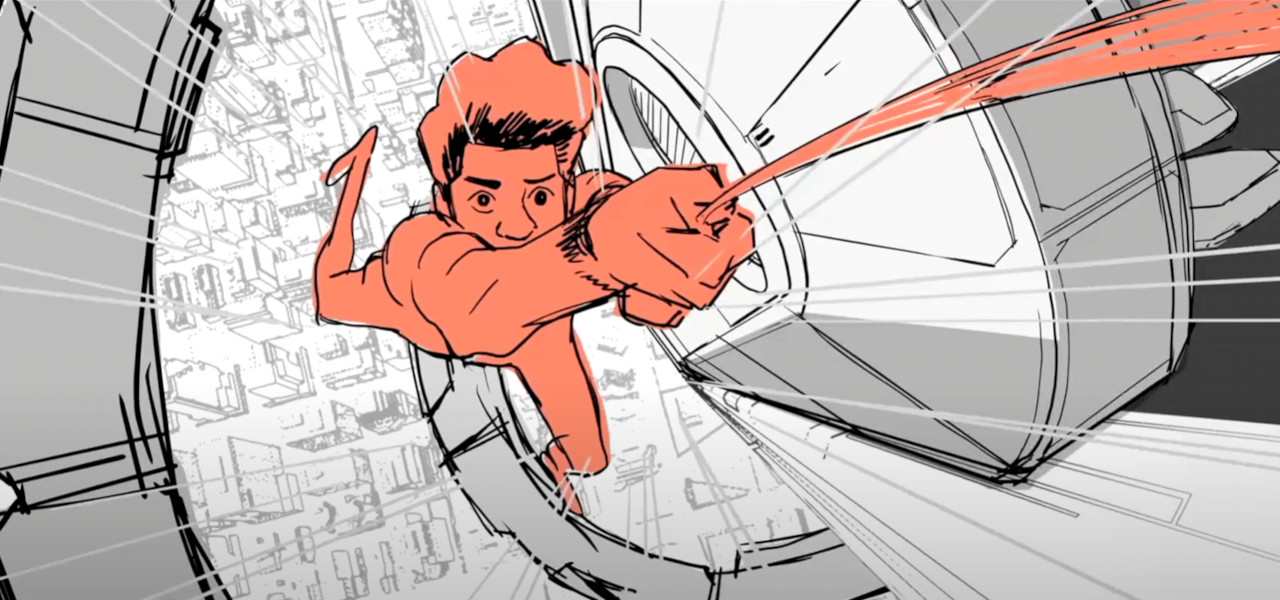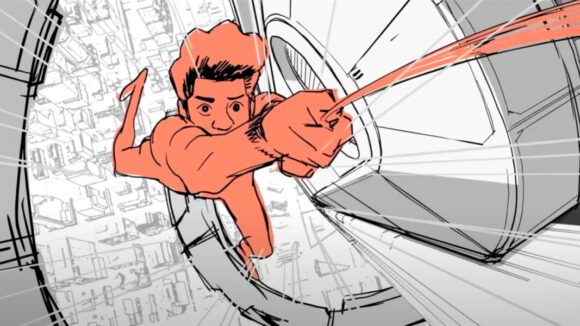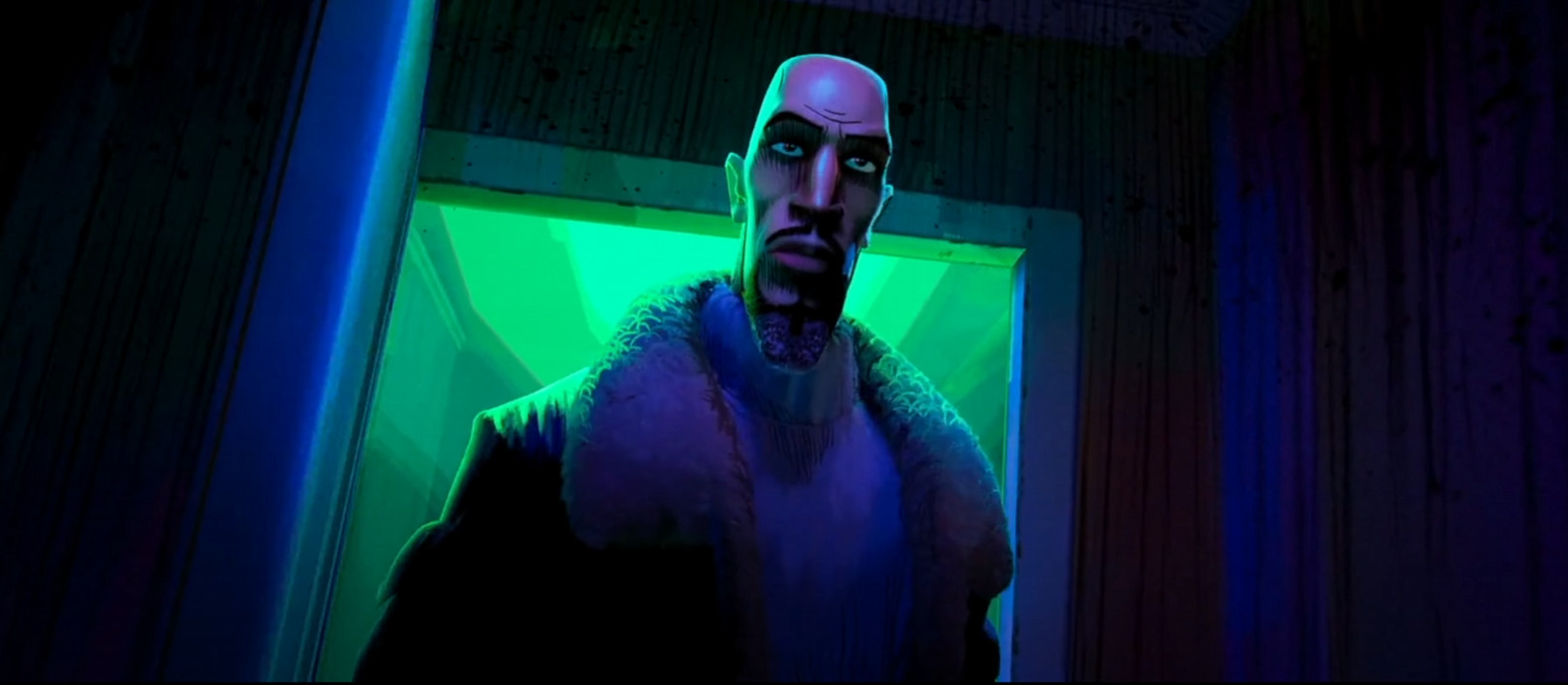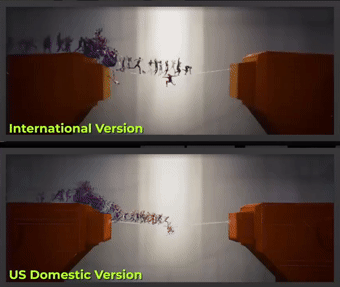

‘Across The Spider-Verse’ Editor Michael Andrews Explains How He Elevated The Film’s Intensity, Rhythm, And Emotion Through Editing
Youtubers and editors Jordan Orme and Hayden Hillier-Smith recently sat down to speak with Spider-Man: Across the Spider-Verse lead editor Michael Andrews about his work on the film.
The interview offers tremendous insight into the collaborative effort that went into making the spider-sequel. That was vital for a film with three directors – Joaquim Dos Santos, Justin K. Thompson, and Kemp Powers – and two famously hands-on writer-producers in Christopher Miller and Phil Lord.
Before reading on, please be aware that this article contains major Across the Spider-Verse spoilers. If you’ve not yet seen the film but plan to do so, we recommend bookmarking this article and returning later.
Spider-Recap
Across the Spider-Verse opens with a 20-minute scene-setting sequence in which Gwen Stacy, a Spider-Person from an alternate Spider-Verse, recaps key narrative points from Into the Spider-Verse while interjecting new revelations from her own universe.
According to Andrews, the opening reel was modified throughout production based on reactions to tests of other scenes from later in the movie. For instance, there is a hugely impactful scene in the film where Mile’s uncle Aaron shows up. After the first test, they realized audiences weren’t feeling the impact of the character’s arrival because they didn’t remember what happened to him in the first film.

So, they went back and added bits of the Prowler story to the film’s opening. Interestingly, rather than reuse animation from Into the Spider-Verse, the crew reanimated scenes with Aaron to fit the aesthetic of the recap.
“One thing Phil insisted on is that if we show something from the old movie, don’t make it look like the old movie,” Andrews explained. “We don’t wanna look cheap; we wanna look like we did something.”
As for foreshadowing later Across the Spider-Verse plot twists, Andrews said of Gwen’s intro: “If you’re really paying attention, it’s all there.”
Why Two Sequels?
Initially, there was only meant to be one Spider-Verse sequel. But Andrews explained that as development on the sequel advanced, it quickly became apparent that one feature wouldn’t be enough to tell the story they had planned.
“We were long, and we had the whole back half of the movie assembled in a very rough state,” he recalled. “We had a couple of screenings and were having panic attacks thinking about, ‘How do we fit all of this in one movie?’ Someone came up with the idea to make it a two-parter. So then the next question was, ‘Where do we split it?'”
He said that the final decision to leave Miles in the literal clutches of danger needed something added to it to prevent the film from ending on a total downer. “We needed to end on a lighter note, and the perfect moment seemed to be leaving Miles in distress, but it had a little hint of ‘I’m getting out of here,'” he explained. “We didn’t want to leave him feeling like he was lost. We wanted to feel like he’s going to do something too.”
Controlled Chaos
Asked how he prefers the production pipeline to function, Andrews explained, “I think in an ideal studio universe… story does their thing, kicks it to editorial, and they cut the movie together. It goes to production, production creates it, and you don’t change a thing. Just keep moving.”
Andrews favors a less linear and more circular system where input can come from anywhere and anyone. “Our approach was, if it needs changing, change it. And we did,” he said.
When the hosts asked how he keeps everything organized in his mind, with so many artists from so many departments all bringing in notes and footage, Andrews laughed before explaining, “It’s insane. There are moments of like, ‘Holy cow!’ I have a kind of very cool calm demeanor, and I just sort of ride it out at all times, and I just take [Uncle] Aaron’s words and ‘Just keep going,'” he explained.
Conspiracy Theories Debunked
When keen-eyed fans noticed a few minor differences between the international and domestic versions of the film, conspiracy theories flooded the internet, with everyone trying to figure out why there were two different versions of the film. Lord and Miller later explained that the reason was exceptionally mundane: they were still working on the film’s final mix after international copies were sent out to meet specific deadlines. Unsurprisingly, that part of the story hasn’t spread across the internet with the pace or popularity the conspiracy theories did before it.
Andrews backed up Lord and Miller’s explanation by sharing a scene in which a large group of Spider-Men run across the webs of a single Spider-Man in an iron cross pose between two platforms. In the storyboarded version, the webs snap, and everyone falls together. According to Andrews, that gag worked well during testing, but the animators sent back a different version in which everyone was launched into the air like a rubber band.

“It was a good, valiant effort to try to embellish it. Then we screened it, and it fell flat, and we were like, ‘Wait, we’ve got to go back to the other one,'” Andrews explained. “This was very late in the game, and I think the international version has the [rubber] band [version] because we were on the mix stage when all this stuff was coming in.”
According to him, the film “was never done. That was the running joke… I’ve never worked that deep [on another film]. It’s a different world now with digital, and you can push it a little closer than you used to now that you’re not making prints. I’m sure there were Sony executives and post-production people freaking out, but we were going to use every second we could.”
Drama and Action
One of the most memorable scenes in Across the Spider-Verse is a climactic fight on top of a speeding futuristic train.
According to Andrews, the sequence was originally “chase, chase, chase, fight, fight, fight when it was first boarded. There was a lot of cool action, but the thing you realize is that it’s all very cool, but we’re lacking character, and we need those moments where we see Miles’ reactions to see what he’s thinking.”
To do that, Andrew and his team added close-up shots where the action slows or stops momentarily, and the entire focus is on the characters involved.
“Every movie I’ve ever worked on, you always got to remember the protagonist, give him the ball, let him run with it, focus on him, hinge it on him. Sometimes you forget that,” he warned.
Another way the crew injected drama into this particular scene was with dialogue. Initially, the entire conversation between Miles and Miguel was meant to happen all in one place. However, the crew realized that spreading the lines between two locations created a more impactful interaction between the characters. That was made all the easier because many of the characters in Spider-Verse wear masks, meaning dialogue can be added without having to adjust much in the animation.
“The joy of working on this movie is that you can put lines anywhere with masked characters,” Andrews half-joked.

.png)
